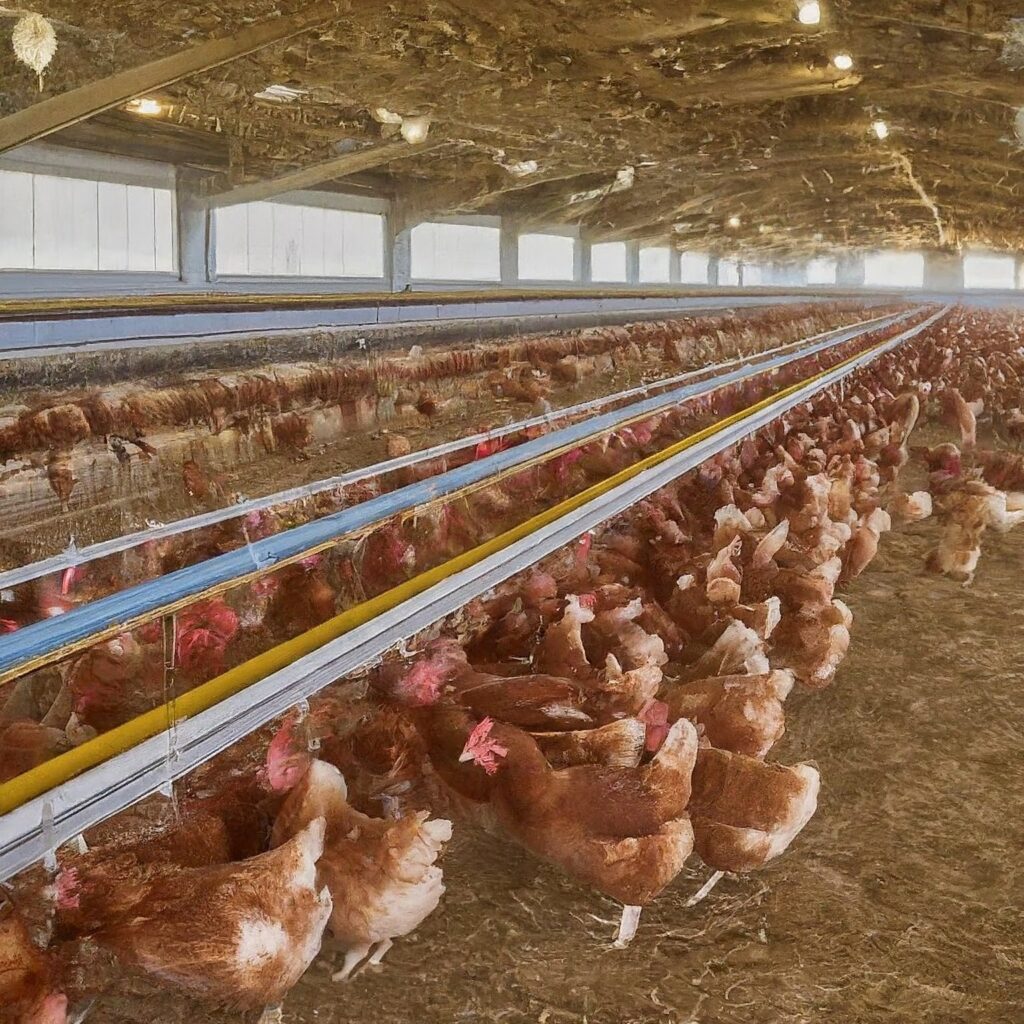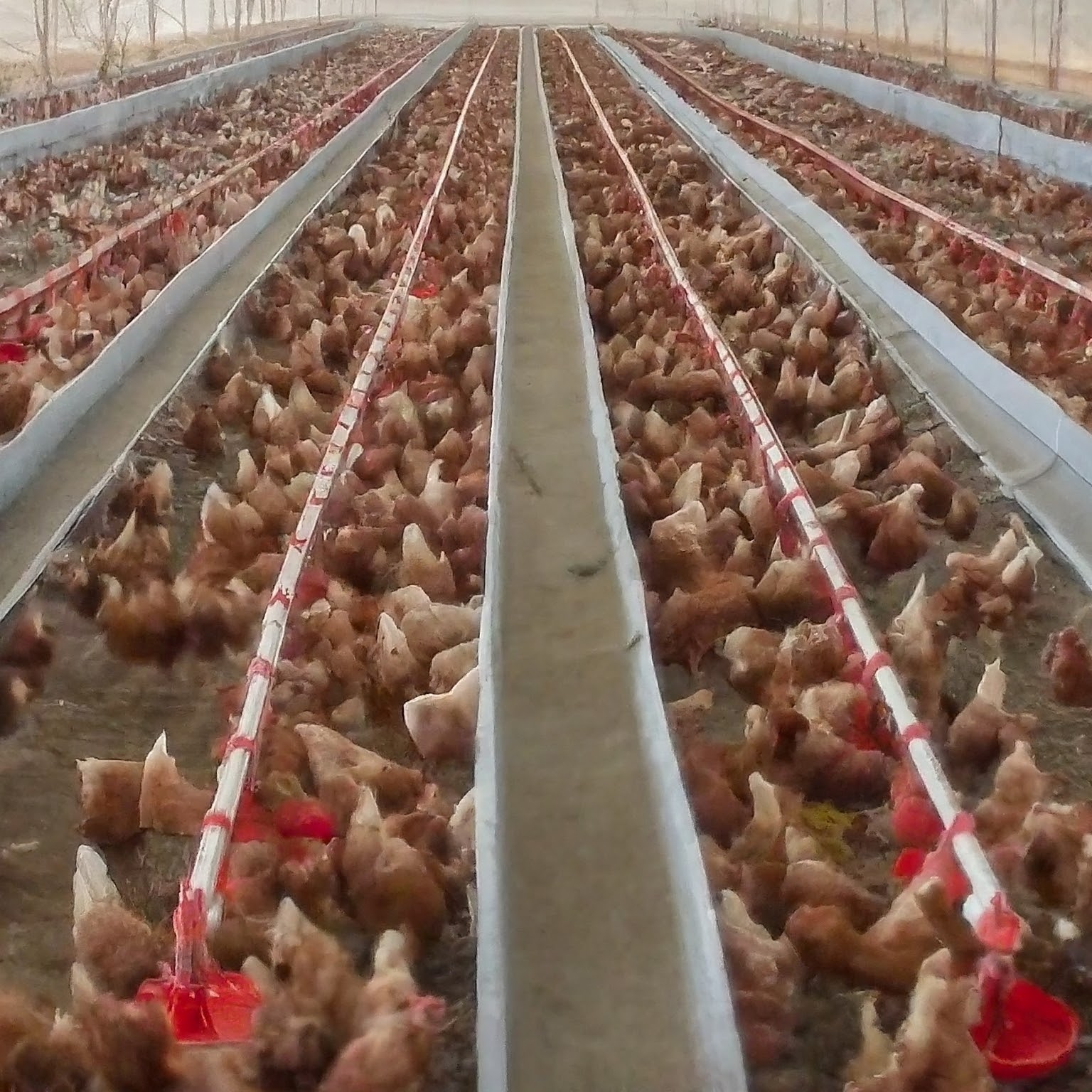One crucial aspect that often gets overlooked in egg production is the optimization of the farm layout for maximum profit.
As a poultry farmer, you understand the importance of efficient space utilization, proper ventilation, and streamlined workflow. But have you considered how these factors directly impact your bottom line?
In this discussion, we will explore the significance of layer farm layout planning and delve into key strategies that can help you achieve optimal profitability.
From determining the right housing system to streamlining worker and material flow, we will unravel the secrets to creating a successful and thriving layer farm.
So, let’s dive into the world of farm layout optimization and unlock the potential for maximum profit.
Significance of Layer Layout Planning
Efficient layer layout planning is essential for optimizing space, ensuring hen comfort and welfare, minimizing disease spread, streamlining tasks for farm staff, and ultimately, maximizing profitability in layer farming.
The importance of hen welfare cannot be overstated in the layer industry, as it directly affects egg production and the overall health of the flock. A well-designed layout provides adequate space for each hen, allowing them to move freely and exhibit natural behaviors.
Additionally, a properly planned layout can have a significant impact on disease control. By implementing proper biosecurity measures, such as separating different age groups and maintaining strict hygiene protocols, the risk of disease introduction and spread can be minimized. This reduces the need for costly treatments and improves the overall health and productivity of the flock.
Therefore, investing time and effort into efficient layer layout planning is crucial for the success of a layer farm.
Efficient Use of Available Space
To optimize space utilization in layer farming, careful planning and strategic design of the layout are crucial components. Efficient use of available space plays a significant role in maximizing productivity and improving hen welfare.
When designing the layout, it is important to consider the size and shape of the layer house and allocate space accordingly. The housing system should be selected based on farm objectives and resources, ensuring proper ventilation, lighting, and access to feed and water for the layers.
Additionally, planning the flow of workers and materials within the layer house can minimize disruptions and optimize efficiency.
Determining Layer Capacity
Determining the optimal layer capacity is a critical step in the efficient planning of a layer farm layout. To calculate the space requirements and optimize the layer population, it is essential to consider factors such as the size and shape of the available space, housing system, and farm objectives. By carefully assessing these factors, farmers can determine the number of layers to accommodate and plan the appropriate cage arrangement.
To create a visual representation of the layer capacity calculation, a table can be used:
| Factors to Consider | Calculation |
|---|---|
| Size and shape of space | Measure the dimensions of the available area |
| Housing system | Determine the number of layers per cage |
| Farm objectives | Set a target for the desired layer population |
| Cage arrangement | Arrange cages to maximize space utilization |
| Ventilation and lighting | Ensure proper airflow and lighting conditions |

Choosing the Right Housing System
When selecting the appropriate housing system for a layer farm, careful consideration must be given to factors such as hen welfare, productivity, and operational efficiency. The choice of housing system plays a vital role in ensuring optimal egg production and profitability.
Here are some key points to consider:
- Cost-effective housing systems: Evaluate different options such as conventional cages, enriched cages, aviaries, or free-range systems based on their initial investment cost, maintenance expenses, and long-term benefits.
- Impact of layout on egg quality: The housing system and layout can directly affect egg quality. Factors such as nest box design, perch availability, and space allowance per hen can influence egg cleanliness, shell quality, and overall egg production.
- Hen welfare considerations: Choose a housing system that promotes hen well-being, allowing for natural behaviors like perching, dust bathing, and foraging. Adequate space, proper ventilation, and access to feed and water are crucial for hen health and welfare.
- Operational efficiency: Consider the ease of management, cleaning, and egg collection when selecting a housing system. A well-designed layout should minimize labor requirements and maximize efficiency in daily tasks.
Cage Arrangement and Equipment Placement
Optimizing the cage arrangement and equipment placement is essential for ensuring the efficiency and functionality of a layer farm. Proper cage arrangement plays a crucial role in improving productivity and minimizing disease risk.
When arranging the cages, it is important to consider proper ventilation to maintain a healthy environment for the layers. Adequate lighting should also be ensured to stimulate egg production. Additionally, easy access to feed and water is essential for the well-being of the hens.
Equipment placement should be strategically planned to minimize disruptions and optimize workflow within the layer house. By carefully considering the placement of equipment such as feeders, waterers, and egg collection systems, farm staff can streamline their tasks, saving time and reducing labor costs.
Streamlining Worker and Material Flow
Efficient worker and material flow is crucial for maximizing productivity and minimizing disruptions within the layer house.
To improve worker efficiency and maximize space utilization, consider the following strategies:
- Implement a clear and logical layout that minimizes the distance workers need to travel between tasks.
- Ensure that workstations are properly organized and equipped with the necessary tools and supplies.
Establish designated pathways for material flow, separating incoming and outgoing materials to prevent congestion.
Utilize technology, such as conveyor belts or automated systems, to streamline the movement of materials within the layer house.
Key Factors in Layer Layout Planning
To ensure a well-structured and effective layer layout, careful consideration must be given to key factors that contribute to the success of a layer farm. Two crucial factors in layer layout planning are layer welfare and disease prevention. Providing a comfortable and stress-free environment for the layers is essential for their well-being and productivity.
This can be achieved by ensuring sufficient space for each layer and incorporating features such as proper ventilation, lighting, and access to feed and water. Additionally, implementing biosecurity measures is crucial to prevent the introduction and spread of diseases within the flock.
Regular monitoring of the layout’s performance and making necessary adjustments is also important. By prioritizing layer welfare and disease prevention, farmers can create a layout that promotes the health and productivity of their layers, leading to a successful and profitable layer farm.
Ensuring Profitability and Success
Achieving profitability and success in layer farming requires strategic planning and implementation of a well-designed layout that optimizes efficiency and maximizes productivity.
To ensure maximum productivity, it is essential to prioritize the welfare of the hens. This can be achieved by providing adequate space, proper ventilation, lighting, and easy access to feed and water. By improving hen welfare, the overall health and egg production of the flock can be optimized.
Additionally, efficient layer layout planning can reduce the risk of disease spread, saving on expenses associated with treatment and preventing potential losses.
Regularly monitoring the performance of the layout and making necessary adjustments is crucial for maintaining profitability and success in layer farming.
Conclusion
In conclusion, optimizing the layout of a layer farm is crucial for maximizing profit and ensuring the well-being of the flock. By carefully planning the arrangement of cages, ventilation, lighting, and access to feed and water, farm profitability can be directly impacted through optimized egg production and reduced expenses.
Additionally, prioritizing factors such as effective ventilation, biosecurity measures, regular monitoring, and utilizing tools like SmartBird can further enhance the success of a layer farm.
With a well-structured layout plan and the right tools, a flourishing and profitable layer farm can be achieved.
